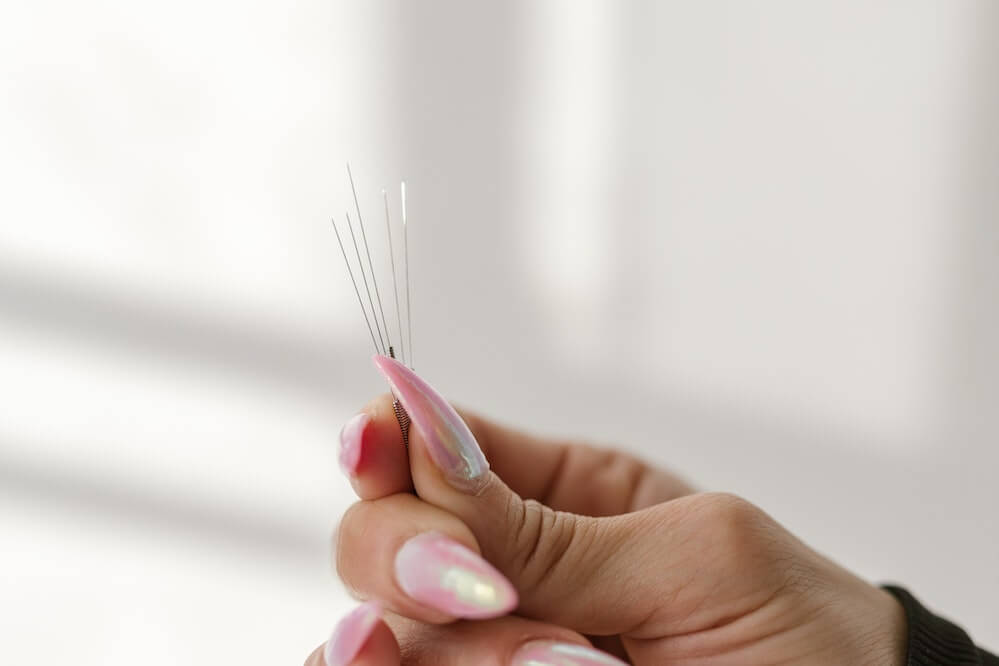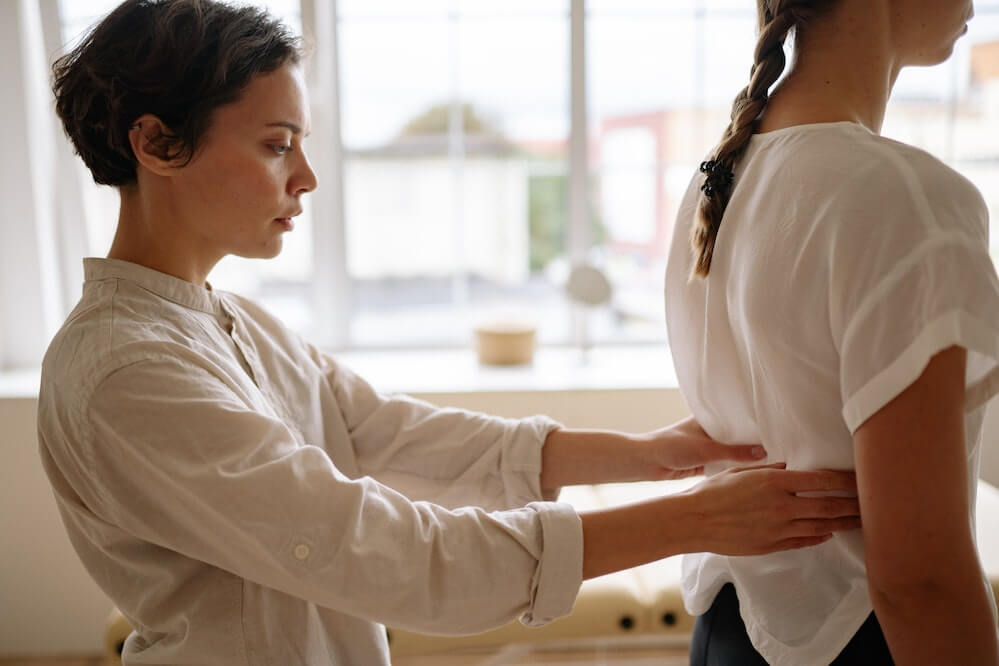According to the World Health Organization (WHO), 619 million people worldwide suffer from lower back pain, and most people experience back pain at least once in their lifetime, making it a common musculoskeletal problem globally. The pain can be mild to severe, sometimes making it difficult to do everyday activities like walking, sleeping, working, etc.
With the rise of alternative medicine as an effective complementary treatment, traditional Chinese medicine techniques like acupuncture have become popular methods for pain management. But how exactly does acupuncture work for lower back pain? Read on as we answer some of the most common questions about this treatment.
Understanding Lower Back Pain

Lower back pain, a common health issue affecting adults globally, is a symptom rather than a disorder itself. It originates from the lumbar region—the lower part of the spine bearing most of the body’s weight. This region is particularly prone to injury, which can result from various activities like lifting heavy objects, making an abrupt movement, or maintaining poor posture over time.
Underlying conditions like degenerative disc disease, lumbar herniated disc, spondylolisthesis, osteoarthritis, spinal stenosis, and fibromyalgia can also lead to lower back pain. Even certain abdominal conditions like kidney stones or infections can trigger this pain.
There are two types of lower back pain: acute and chronic. Acute pain is sudden and typically lasts a few days to weeks, while chronic pain persists for 12 weeks or longer. The nature of the pain helps dictate the most suitable treatment methods, which can range from self-care to medications, physical therapy, surgical interventions, and alternative therapies like acupuncture. The effectiveness of these treatments, specifically acupuncture, will be further discussed in this article.
What Is Acupuncture?

Acupuncture is a more than two millennia-old traditional Chinese medicine (TCM) practice involving puncturing the skin to restore energy flow and promote balance and healing in the body.
According to TCM, energy or qi flows in 14 main meridians or channels in the body, and stimulating specific acupoints along the meridians by inserting thin needles can release energy blockages. From the Western standpoint, acupuncture works by activating nerve endings to stimulate the nervous system to release endorphins and neurotransmitters.
As an alternative treatment, acupuncture is effective for relieving pain and discomfort associated with conditions and ailments like:
-Menstrual cramps
-Lower back pain
-Tennis elbow
-Dental pain
-Chemo-induced nausea and vomiting
-Osteoarthritis
-Fibromyalgia
-Allergic rhinitis
Is Acupuncture Effective for Lower Back Pain?

Acupuncture is garnering attention in the Western world for its potential to manage various health conditions, including lower back pain. Research suggests that it can provide relief for this common ailment.
However, the effectiveness of acupuncture is not uniform for everyone and can depend on a variety of factors. These may include the nature and severity of the back pain, the individual’s overall health, and the skill and approach of the acupuncturist.
As with many treatments, more research is needed to fully understand the extent of acupuncture’s efficacy for lower back pain. The specifics of how acupuncture could alleviate lower back pain will be discussed further in the following sections.
How can acupuncture alleviate lower back pain?
Although we still don’t completely know the full mechanism of how acupuncture works, the ways acupuncture can help alleviate lower back pain are by:
-Stimulating the release of feel-good hormones or endorphins
-Improving blood circulation
-Regulating the release of neurotransmitters
-Releasing opioid-like painkiller chemicals
Studies and research on the effectiveness
Over the years, various studies and research have been conducted to assess the effectiveness of acupuncture in treating lower back pain. The general consensus among these studies suggests that acupuncture can indeed be beneficial in managing lower back pain.
However, it’s important to note that responses can vary widely from person to person, and more comprehensive research is necessary to establish the precise extent of acupuncture’s effectiveness.
Undergoing Acupuncture Treatment: What To Expect
Although the treatment process depends on the practitioner, patient preferences, condition, etc., here’s what an acupuncture treatment usually looks like.
The acupuncture session: step-by-step process
Before the procedure, your acupuncturist will assess your condition and inquire about your medical history, lifestyle, symptoms, and health concerns. They may also examine the body parts that are painful, the color of your face, the strength and rhythm of the pulse, and the shape, coating, and color of your tongue.
During the procedure, you’ll be provided with a gown or sheet and have to lie on a padded table for the treatment. The steps of the treatment include:
-Needle insertion in specific acupoints in the body. Generally, acupuncturists use 5 to 20 needles during the treatment.
-Needle manipulation by gently moving or twirling the needles. This step can also include applying heat or electrical pulses to the needles.
-Needle removal after 15 to 30 minutes of lying still and relaxing.
-Before you leave, the acupuncturist may offer advice on lifestyle changes or exercises to assist with your lower back pain.
Potential side effects and considerations
Acupuncture is a safe treatment with little to no side effects. The mild, short-term side effects usually resolve on their own in a few hours to a day or two. Some of the potential side effects include:
-Pain, bruising, or bleeding where the needles puncture the skin
-Dizziness
-Fatigue
-Drowsiness
-Soreness
You should avoid acupuncture if you have blood disorders like hemophilia, are taking anticoagulant medicine, or have a metal allergy. Although acupuncture is safe during pregnancy, we recommend consulting your doctor beforehand.
Frequency and duration of treatments for optimal results
The frequency and duration of acupuncture treatments for lower back pain depend on individual factors, including the severity of the pain and response to treatment. For chronic conditions, typically, one to two sessions per week over several months may be needed. Acute pain might improve with fewer sessions.
Each session usually lasts between 30 to 60 minutes. After the initial treatment phase, maintenance sessions, perhaps once a month, can help manage symptoms and prevent recurrence. As everyone’s experience is unique, treatment plans should be personalized and adjusted as necessary in consultation with a qualified practitioner.
Combining Acupuncture With Other Therapies

Lower back pain can often benefit from a multi-faceted treatment approach. Acupuncture, while effective on its own, may work synergistically with other therapies to enhance pain relief and recovery.
Complementing acupuncture with physiotherapy can amplify the benefits, as the latter focuses on strengthening back muscles and boosting mobility. Similarly, massage therapy can dovetail with acupuncture, offering enhanced relaxation of tense muscles and improved circulation.
Incorporating lifestyle modifications—like a balanced diet, regular physical activity, and stress management—can also augment the pain-alleviating effects of acupuncture. This integrated approach may even reduce reliance on traditional pain medications.
The Bottom Line
In conclusion, acupuncture has shown promise as a potential treatment for lower back pain. Studies indicate it can offer significant relief, and its benefits may be amplified when integrated with other therapies like physiotherapy, massage, and lifestyle changes.
While acupuncture’s effectiveness varies among individuals, it remains a safe and viable option worth considering in a comprehensive approach to managing lower back pain.
Acupuncture can also help with relaxation, reducing stress and anxiety, and promoting overall well-being. So, if you want to give acupuncture a chance to do wonders for your well-being, check out our Holistic Wellness Center and receive a holistic treatment tailored to your needs.
Frequently Asked Questions
Does acupuncture hurt?
In general, acupuncture doesn’t hurt. However, you may experience mild pain or discomfort if the needles aren’t placed correctly. Make sure to communicate with your practitioner if you feel pain or discomfort so they can act accordingly.
How long does it take to see results?
Although every patient responds differently to acupuncture appointments, patients report they can notice improvement from the first or second session.
Is acupuncture covered by insurance?
The coverage for acupuncture varies significantly depending on your insurance provider and the specifics of your health plan. Some insurance companies in the United States and other countries do cover acupuncture treatments, especially for certain conditions like chronic pain. Medicare, for instance, covers up to 12 visits in 90 days for chronic low-back pain and an additional eight sessions for patients showing improvements.
Can I perform acupuncture on myself?
Technically, yes. But to self-practice acupuncture, you must possess the necessary knowledge and skills. However, we don’t recommend self-practice as you won’t be able to reach all acupoints by yourself, might place needles in the wrong acupoints, and might neglect hygiene standards, thus putting yourself in harm’s way. So, we highly recommend receiving acupuncture treatment from qualified acupuncturists.